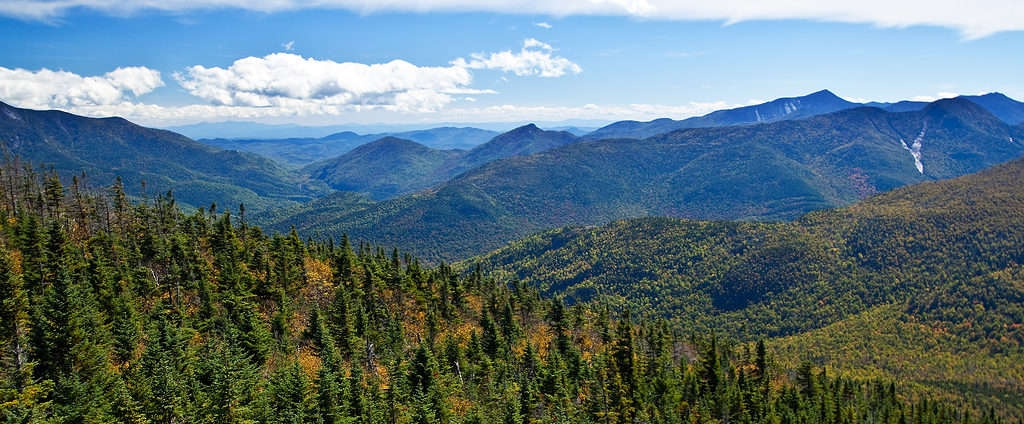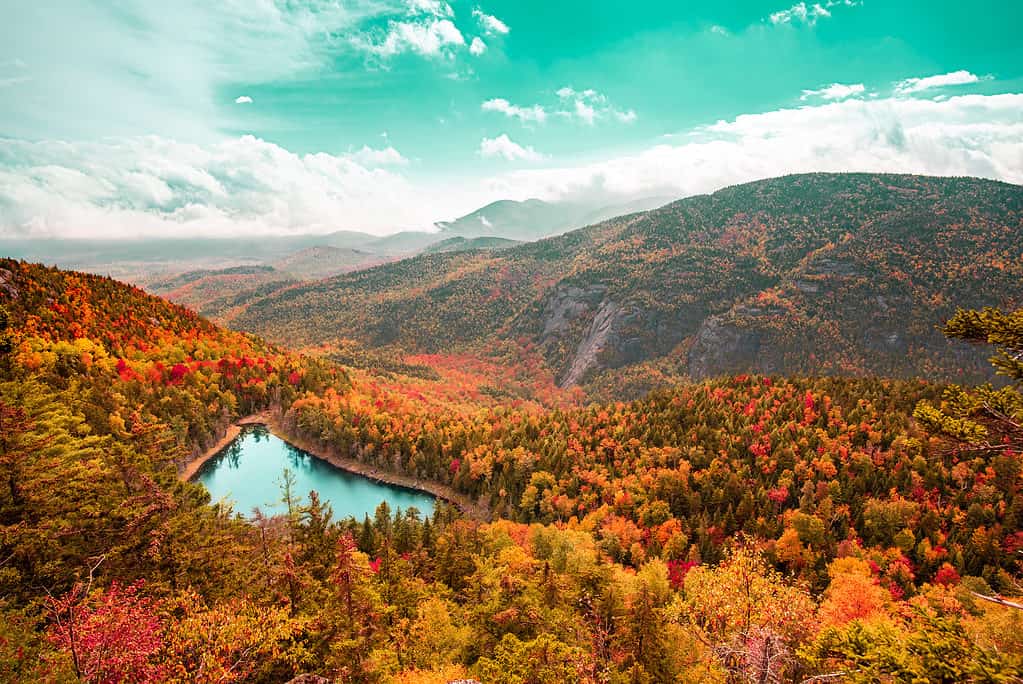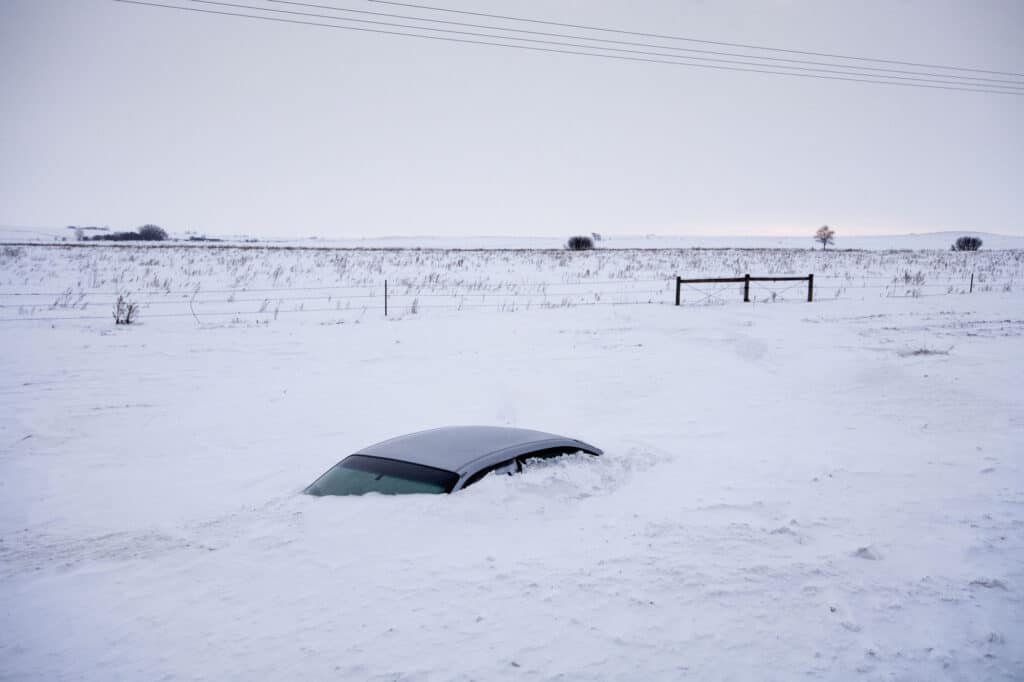Of all the states in the northeastern United States, New York may be one of the coldest! Although the most famous part of the state is the aptly named New York City, there is a lot to the state and region that aren’t a part of NYC. Today, we are going to be exploring New York, particularly the coldest place in the entire state. By the end, you’ll know which region to avoid if the cold isn’t something you are adjusted to!
Let’s get started.

The Coldest Place in New York
As a northern state, New York is one of the colder places you can visit in the United States. The coldest place in the entire state of New York is the Adirondacks, a mountain range located in the northern portion of the state, bordering Vermont.
Despite New York City getting a lot of attention, it isn’t the coldest part of the state. That award easily belongs to a mountain range known as the Adirondacks. The Adirondacks are a well-known mountain range that is part of the Canadian Shield range, not the Appalachian range. The primary reason the Adirondacks are the coldest part of the state is due to two factors: latitude and elevation.

A view of the high peak of the Adirondacks in New York, the coldest place in the state.
©Andy Williams photos/Shutterstock.com
Lattitude refers to a region’s relative location to the poles, either north or south. As a region gets closer to the poles (and further from the equator), extreme temperatures and weather become more common. Since New York is one of the most northerly states in the United States, it is subject to the colder temperatures associated with the region. The second factor in the region’s cold temperatures is its elevation. Generally speaking, the higher the elevation, the colder it is. Since the Adirondacks are a mountain range, they are home to the highest elevations in the state. Combining both the northerly location and the elevation, the Adirondacks are easily the coldest part of New York.
The Temperature of the Coldest Place in New York

Because of its elevation the Adirondack mountain range has cool summers and particularly cold winters.
©Mountain Man Photos/Shutterstock.com
Like most of the continental United States, the state of New York has a seasonal weather system. As a result, the state — including the Adirondacks — is warm in the summer and cold in the winter. Due to the high elevation, however, the mountain range has cooler summers and colder winters than the rest of the state.
The average summer temperature for the Adirondacks is between 66 to 73 °F, while the average winter temperature is between 18 to 23 °F. In addition to being cold, the winter weather is harsh and extremely snowy.
The Coldest Temperature Ever Recorded in New York

The Stillwater Reservoir in New York is one of two places — on separate occasions — where the coldest temperature ever recorded in the state was recorded.
©Coby H/Shutterstock.com
There have been two instances of the coldest temperature ever recorded in New York, both of which were -52 °F. The first instance was in February 1934 in Stillwater Reservoir, while the second was in February 1979 in Old Forge. Stillwater Reservoir is located in the western Adirondacks, while Old Forge is commonly known as the “Adirondack Base Camp” for recreational visitors heading north. With the lowest average temps and the two lowest recorded temps in the entire state of New York, the Adirondacks clearly reign supreme as the coldest place in New York.
Biggest Blizzard in New York History

The Great Blizzard of 1888 influenced city planners to implement underground power lines and transportation.
©Miscellaneous Items in High Demand, PPOC, Library of Congress, Public domain, via Wikimedia Commons – License
The Great Blizzard of 1888 was the worst blizzard in New York’s History. Residents refer to it as the Great White Hurricane. It lasted from March 11th to March 14th, 1888, and paralyzed the entire eastern coast of the United States.
Just prior to the storm, the temperatures were unusually warm, with heavy rain falling. On the 12th of March, the temperature in New York City plummeted from 33°F to 8°F, and the rain transformed into snow.
This powerful nor’easter started around midnight on March 12th and went on for over two days. Snow drifts were observed to be 30-40 feet high, surpassing the height of the homes in New York. The highest drift was spotted in Gravesend, Brooklyn, at 52 feet, making it the most intense blizzard in New York history.
Saratoga Springs, New York, received 58 inches of snowfall. Albany and New York City were not far behind, with 48 and 45 inches, respectively. The storm was accompanied by fierce winds, with 80 miles per hour gusts reported in general and 54 miles per hour gusts reported at Block Island, while the highest official wind speed recorded in New York City was 40 miles per hour.
On March 13th, temperatures in New York City plummeted to a record low of 6°F, with the high temperature only reaching 12°F. As a result, all forms of transportation were shut down for days, including emergency services.
Communication lines were destroyed, leaving the people isolated. The huge amount of property destruction from fires totaled 25 million dollars, and unfortunately, 100 sailors perished along with 200 city residents.

During the biggest blizzard in New York history, some areas received 58 inches of snowfall.
©Photo Image/Shutterstock.com
The People and Ecology of the Adirondacks
The Adirondacks are home to humans and animals alike. The Adirondack Park is nearly congruent with the entire Adirondack range. The average year-round population of the park sits around 132,000 residents, although there are over 200,000 seasonal residents that flock to the area during the various recreation seasons that the park and surrounding range offer. Despite the region being extremely cold for the winter months, hunting, fishing, and snowmobiling are all quite popular activities in the area.
Aside from people, the Adirondacks are home to an extremely diverse ecology. Regarding trees, the region is home to one of the largest stretches of taiga in North America, with huge forested portions of various species of spruce, pine, and deciduous trees. Additionally, the range is home to three types of wetlands, including swamps, marshes, and bogs.
Due to the elevation and cooler temperatures in the region, certain bird species can survive and aren’t present anywhere else in the state, including boreal chickadees, Canada jays, spruce grouse, and black-backed woodpeckers. Other animals in the region include raccoons, otters, bobcats, moose, black bears, coyotes, and beavers. Since colonization, the eastern cougar, elk, wolverine, wolf, and lynx have been extirpated from the area and pushed either west or north.
Up Next…
The photo featured at the top of this post is © Mountain Man Photos/Shutterstock.com
Thank you for reading! Have some feedback for us? Contact the AZ Animals editorial team.






